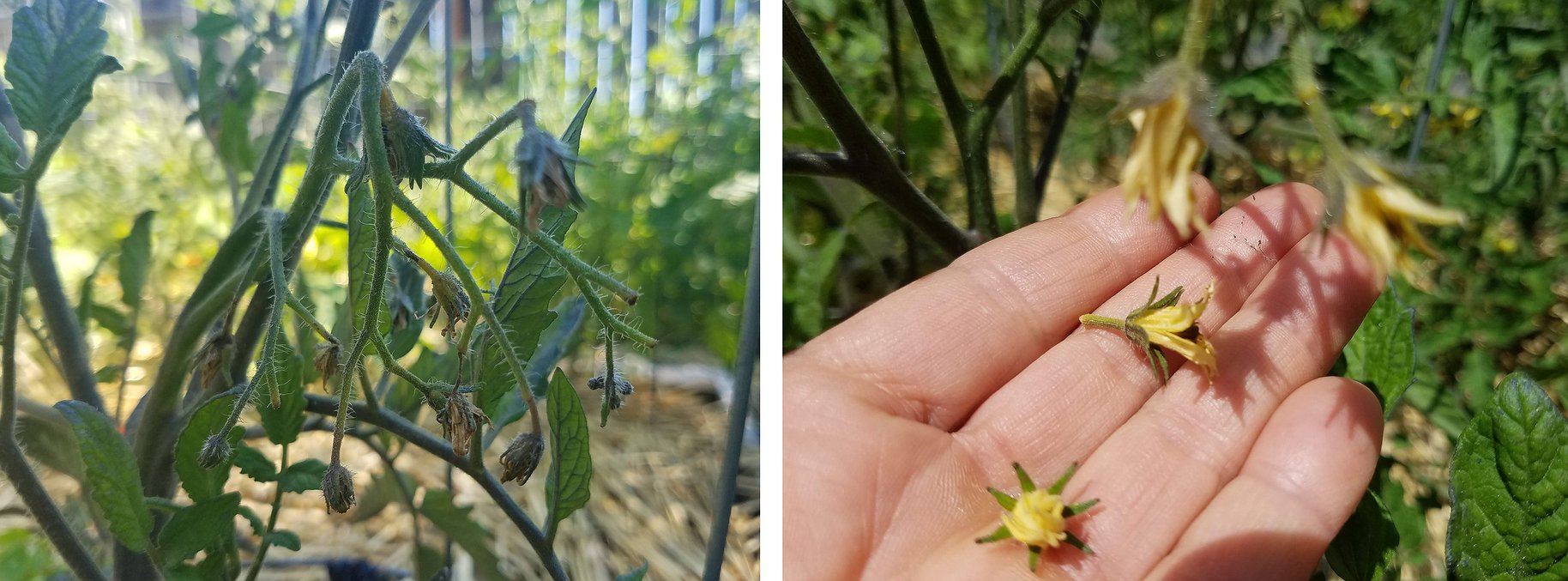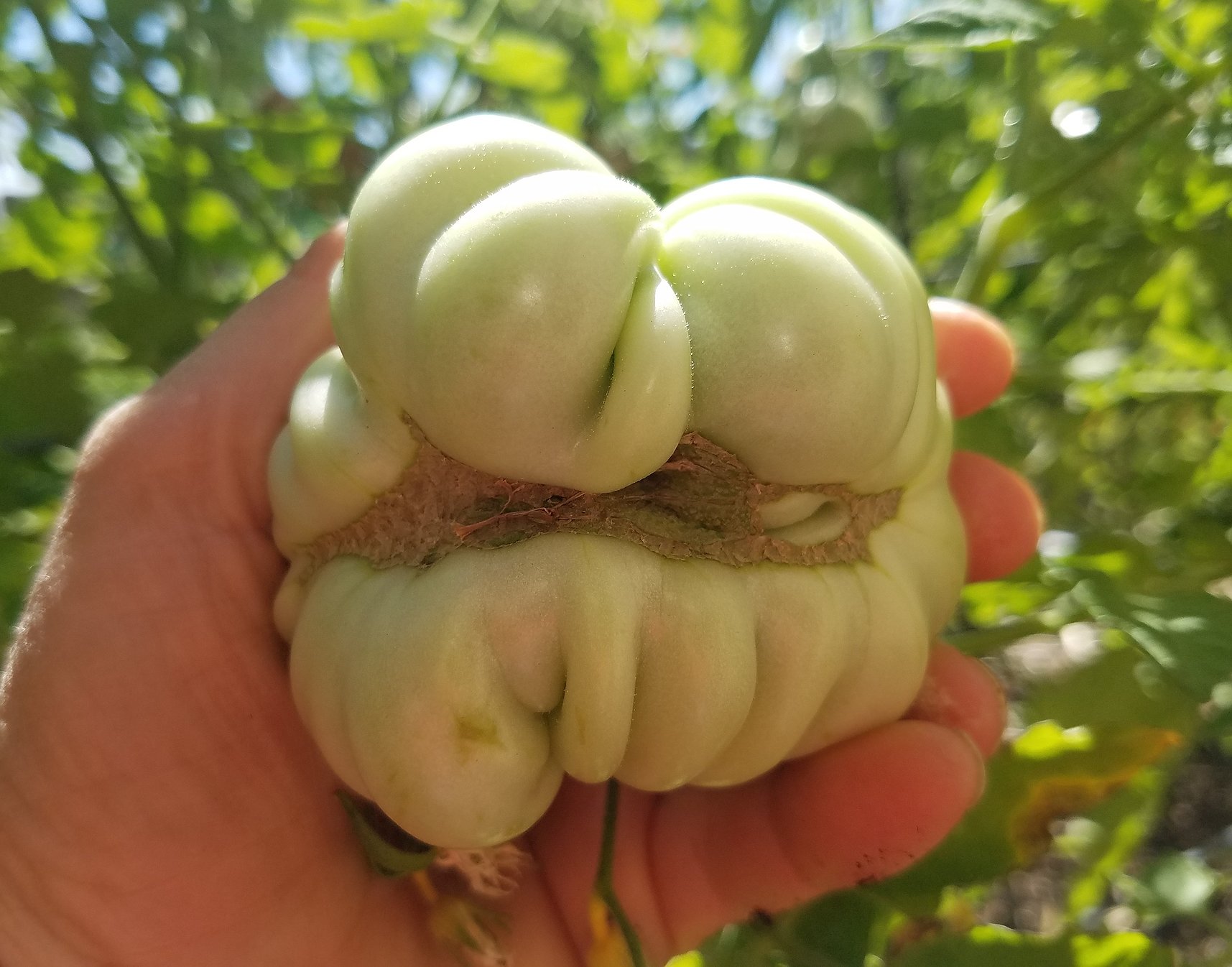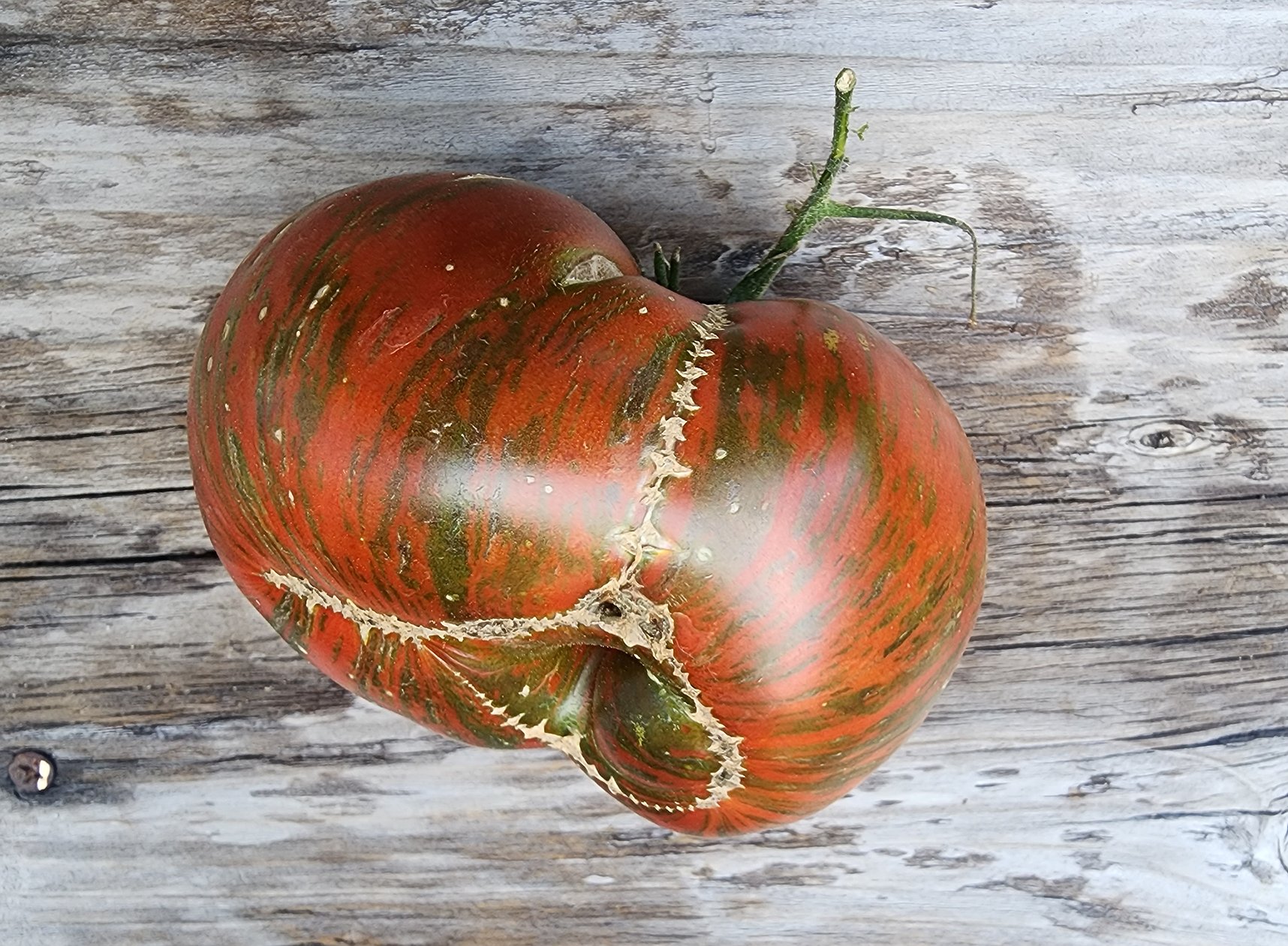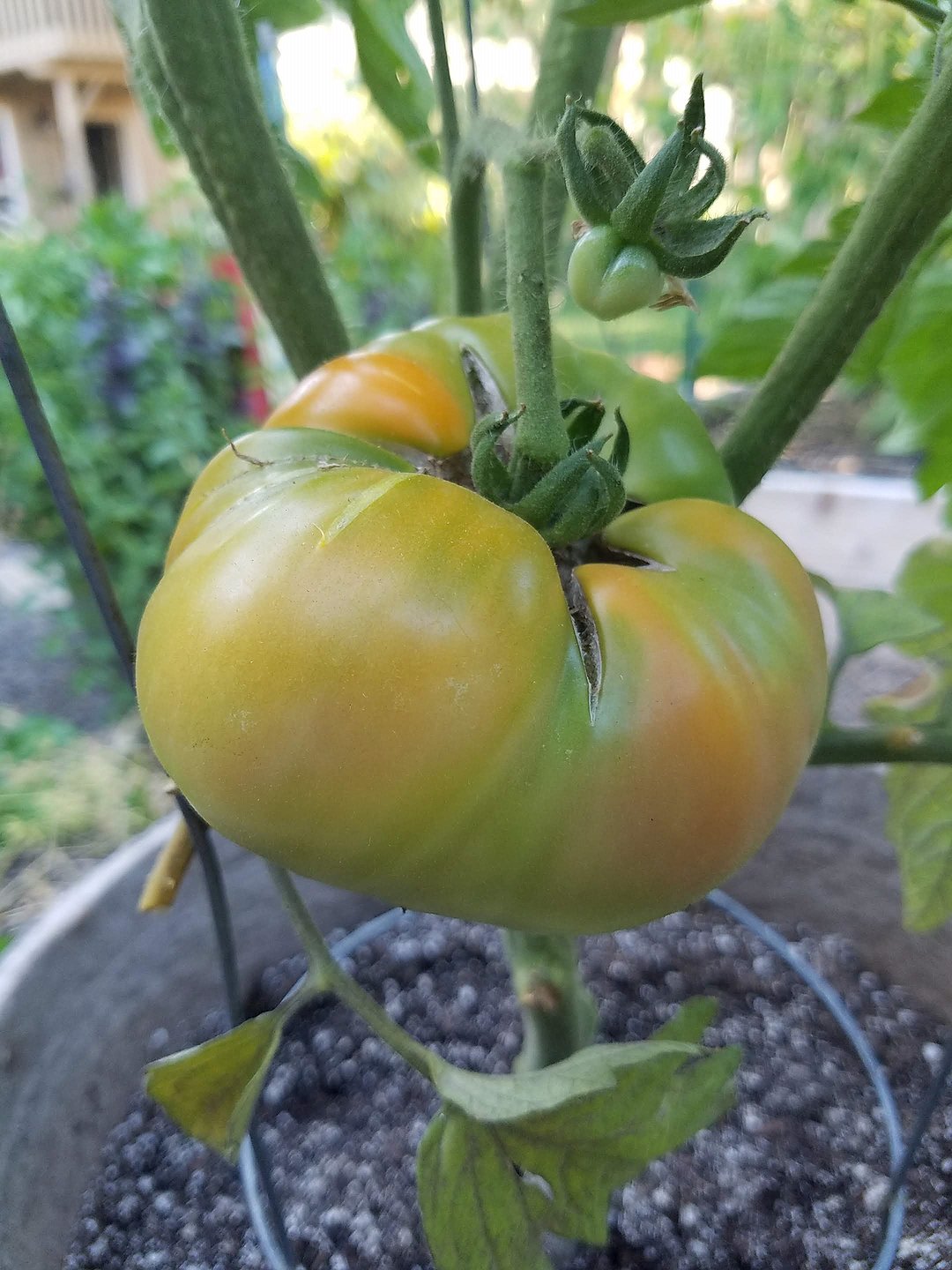Weather woes and tomatoes: The effects of extreme temperatures
The ripening tomato is a sight to behold in the garden. It’s certainly the pomme d'amour of my eye. A warm-season crop, tomatoes are one of the most commonly grown vegetables in the home garden. But while they are relatively easy to grow, I consider tomatoes the “Prima Donnas” of the garden.
For a successful tomato harvest, the growing conditions for the tomato plant must be just right; this begins with seed germination and continues through to fruit ripening.
You would assume that being a warm-season crop, the tomato would relish our recent hot temperatures. Unfortunately, this is not the case and you may begin to see the effects on your plants now and even later in the season.
Weather woes
Weather conditions, such as temperature fluctuations, extreme heat, wind and rain, greatly impact the tomato plant’s performance. Of these conditions, temperature plays the most important role; affecting proper pollination, fruit set and the ripening process. Let’s explore how temperature affects each of these processes.
Pollination problems
Tomatoes are self-pollinators with “perfect” flowers, meaning the blossoms have both male and female reproductive parts. They don’t rely on insects for pollination (although that happens). Often pollination occurs before the blossom even opens.
When pollination doesn’t occur, the blossom dries and falls off the plant. This is known as blossom drop. But, wait … if the tomato is self-pollinating, why wouldn’t pollination occur?
It’s commonly due to weather conditions, especially in our region. The optimal temperature range for successful pollination is between 70 and 85 degrees. Our spring temperatures are usually well below 70 degrees; in recent years, summer is often over 85 degrees. When temperatures are outside the optimal range, pollination is affected, causing issues like blossom drop or misshapen fruit.
I know it’s difficult to watch tomato blossoms drop to the ground in summer, but don’t panic. Your healthy tomato plants will continue to blossom and set fruit once it’s cooler.
You may also see some odd-looking tomatoes developing on the vine. These are usually the first fruits set on the plant and may exhibit several fruits fused into one, be severely misshaped, or have zig-zagging scars on the skin (or all of the above). Talk about Franken-fruit!
These abnormalities are also due to pollination issues, but in this case, it’s from cooler-than-normal temperatures early in the season. Conjoined fruits are the result of “mega-blossoms” or blossom fusing. A mega-blossom should have formed into multiple flowers; instead, it fuses into one large blossom. Blossoms often look like dandelion flowers on the plant. When examined closely, two or more ovaries will be present within the blossom. The result is one big tomato, or should we say tomatoes?
Cat-facing, often found in large heirloom tomatoes, is an abnormality characterized by its deeply creased fruit with a brown, cork-like deformity on the blossom end. It’s common on fruit set early in the season when temperatures are more likely to be unstable. (Note: Cat-facing is not the same condition as blossom end rot. The brown, corky patch on the fruit can be confused with the leathery brown patch of blossom end rot. Blossom end rot will be the topic of my next article).
Do your tomatoes have scars running down their skin? This phenomenon is known as zippering, and again, it is a condition caused by low temperatures during pollination. When the anther of the tomato blossom becomes stuck to the newly forming fruit it creates a zipper-like scar usually from the blossom end to the stem. Some fruits may develop a closed hole as well.
Given our cooler-than-usual spring, don’t be surprised if you see these abnormalities on your tomatoes. The good news is all are minor physiological issues. None cause harm to the plant or render the resulting fruit inedible.
Too hot to ripen
Not only do tomatoes have an optimal temperature range for pollination, but they also have an optimum temperature range for ripening — 68 to 77. The further the temperature moves in either direction from that optimum, the slower the process will be.
In addition, when temperatures are consistently over 85, the production of lycopene and carotene, the pigments that give tomatoes their color, stops. This causes fruit to remain in the mature-green stage or a shade of yellow to orange. Ripening may or may not continue once conditions improve.
This means our extended periods of extreme heat can significantly slow down or even stop the ripening process in our tomatoes.
Keeping it cool
Unfortunately, there isn’t anything we can do to control the weather, but you can keep your tomato plants cool by installing a shade cloth and mulching around your plants to keep the soil cool and moist. Pay special attention to plants growing near walls or structures that radiate excessive heat.
If blossoms drop, your tomatoes grow a bit wonky, or are slow to ripen this summer, it's not from anything you’ve done — it’s just the weather. Oh tomatoes, we still love you, despite your especially finicky, fair-weather growing needs. We’re thankful to harvest your sweet, delicious fruits, and at summer’s end, pat ourselves on the back for a job well done in spite of Mother Nature.
• • •
Candace Godwin is a certified Idaho Master Gardener and the owner of The Coeur d’Alene Coop (thecoeurdalenecoop.com), offering seasonal plant sales and advice on gardening and raising backyard chickens.













